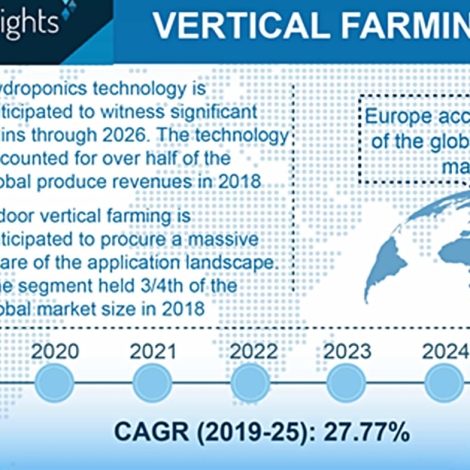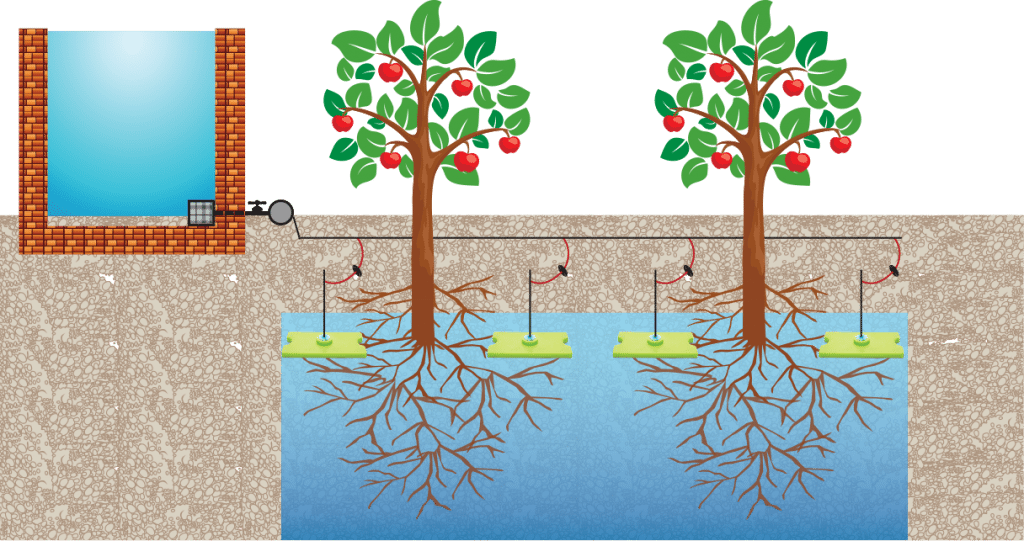The vertical farming market was estimated at $3 billion in 2018 and is predicted to hit $20 billion by 2026, rising with a compound annual growth rate of 27 percent. The growth is attributed to worldwide concerns about climate change and environmental pollution according to a report by Global Market Insights, Inc.
Findings of interest to social entrepreneurs and global development engineers
- The UN’s Sustainable Development Goals encourage vertical farming
- Hydroponics is the most popular technology in vertical farming
- A quarter of vertical farming operations are outdoors, usually in areas with limited yield and land
- Europe has the highest demand and growing demand is expected in Latin America
- Asia Pacific has the highest growth for aeroponics, hydroponics and aquaponics
- Investment in green infrastructure is increasing
- Technology advancements in aeroponics, hydroponics, and aquaponics drive vertical farming growth
Vertical farming: an overview
Vertical farming is a form of stacked farming that uses various technologies to produce food and medicines in unused vertical spaces, which mainly includes warehouses, shipping containers, and skyscrapers. This technique not only makes use of abandoned property, but also decreases the use of fossil fuels (transport of crops and farm machines) and provides the possibility of sustainability in urban areas. Thus, ideal use of unused vertical space and stable energy utilization will surge growth in the vertical farming market.
Swelling populations and their demand for food, coupled with a trend towards sustainable farming, will positively increase this use of stacked farming in the coming years. In one example, the United States Department of Agriculture (USDA), along with the US Department of Energy, organized a stakeholder workshop in 2018 that aimed to increase vertical farming and sustainable urban ecosystems. Efforts such as these are directed at easing global food scarcity.
Fish gains popularity
By product, the industry is classified into aquatic species, fruits, vegetables and herbs. Aquatic species is expected to balloon at a compound annual growth rater of more than 24 percent by 2026. These species are mainly cultivated through aquaponics. Tilapia is the most common species bred in vertical farms. Other species commonly used include trout, prawns and bass.
The aeroponics advantage
Based on technology, it is predominantly categorized into hydroponics, aquaponics and aeroponics. Here, aeroponics accounts for a fairly large share of the market owing to superior quality products grown under misters. Furthermore, this technology uses a minimal amount of water and soil for crop cultivation. Thus, it is considered to be the most sustainable vertical farming technology in the segment.
Vertical farming outdoors
On application basis, outdoor vertical farming is likely to illustrate a substantial growth from 2019 to 2026. Growth in the segment is attributed to the increasing use of hydroponic technique for cultivation, as this technique helps plants to grow without soil. Additionally, this technique uses only 10 percent of the water for growing plants when compared to conventional farming.
Market overviews and forecasts by region
Europe is the largest market for stacked farming owing to rising sustainable agricultural practices in the region. Moreover, several governments in the region are conducting workshops and summits to create awareness on vertical farming, which has motivated many private entities to invest in this industry. For instance, Ocado, a UK based e-grocer has invested more than USD 20 million in indoor vertical farming. This will not only help the region to meet its increasing food demand but will also provide assistance to fight climate change in the long term.
Other regions are taking up vertical farming, also. From the report:
Asia Pacific displayed the highest year-over-year growth for aeroponics, hydroponics and aquaponics over recent years and could overtake other continents in the near future. Singapore, South Korea and Japan are constantly investing in these technologies due to growing land scarcity in the region. Australia, ASEAN countries, India and China will see a huge upheaval in vertical farming in coming years.
In North America, the U.S. has implemented various programs to provide benefits to farmers who implement vertical farming. Large demand for exports within the Americas will drive the LATAM market to adopt more sustainable solutions.
For details and the option to purchase the report, please see Vertical Farming Market by Global Market Insights.

